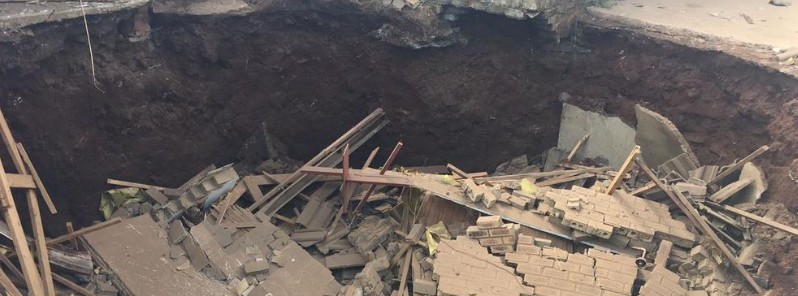At least 16 sinkholes found near Johannesburg after heavy rains

At least 16 sinkholes have been identified in West Rand's Khutsong near Johannesburg, South Africa following heavy rains that hit the drought-stricken country in the wake of Tropical Cyclone "Dineo."
During the early morning hours of Sunday, March 5, 2017, a massive sinkhole in Khutsong swallowed a house and threatened several more. Luckily, the house that fell into the sinkhole was empty at the time and no one was injured.
Other residents have also fled their homes after experts identified at least 16 new sinkholes in the Merafong Municipality area.
Authorities say a geotechnical investigation is currently under way, and those affected by sinkholes, will be moved to an emergency housing with immediate effect.
This region is well known for its karst landscape (dolomitic) and numerous sinkholes. However, residents blame local authorities for recent disasters as they have, reportedly, asked for help after identifying numerous leaking pipes.
Geologists investigated West Rand sinkholes as far back as 1960s. They started appearing particularly since pumping for the gold mines intensified in the 1950s. These collapses characteristically occur suddenly and produce a deep crater (A.B.A. Brink, 1979).
The one at the West Driefontein mine in December 1962 was 55 m [180 feet] in diameter and at least 30 m [98 feet] deep. It claimed 29 lives.
"The ground consists of residual soils of the order of 100 or more meters [328 feet] thick overlying a highly irregular surface of cavernous early Proterozoic dolomites," Brink explained and proposed a mechanism of sinkhole development:
In the initial equilibrium situation, vertical slots, plugged by residual soil, connect the floors of the buried "valleys" in the dolomite surface to flooded caverns located in this rock body at depths of around 1 km (0.62miles). Dewatering of the caverns by the mine pumping, initiates a process of headward erosion, stimulated by water from leaking pipes, which first flushes out the slots and then leads to the formation of a progressively enlarging vaulted void within the overlying superficial layer. Finally the arched roof of this void collapses, usually as a result of the continued entry of water, earth tremors or vibrations, to form the sinkhole.
Featured image: Massive sinkhole swallows a house in Khutsong, West Rand, Johannesburg, South Africa – March 5, 2017. Credit: Malungelo Booi / eNCA

Commenting rules and guidelines
We value the thoughts and opinions of our readers and welcome healthy discussions on our website. In order to maintain a respectful and positive community, we ask that all commenters follow these rules.